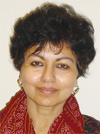Open educational resources coupled with the increasing capabilities of the Internet would offer new dimensionality to distance education by facilitating extensive access to globally created educational resources to serve the knowledge needs of diverse communities. The National Knowledge Commission's recommendations on education have addressed a variety of topics and issues, including distance education and institutional governance.
Changing educational paradigm
Open and Distance Learning (ODL) is one of the most rapidly growing fields of education. ODL has brought together a range of technologies that have enabled teachers and learners to overcome barriers in distance and time. These technologies have enabled distance teachers and learners who are separated by distance to communicate with each other in real time (synchronous) and delayed time (asynchronous). A direct outcome of this indicates that access to education and learning opportunities are now suited to individual lifestyles, learning preferences and personal development plans.
According to Dr Neeta Kapai, Deputy Director, Campus Placement Cell, Indira Gandhi National Open University (IGNOU), “Distance education at IGNOU has been democratizing the dissemination of quality education for all. With the aim of providing employability skills, we impart training to the youth through common service centres which are technologically enabled. We have a tie-up with NIS Sparta wherein we will be training youth belonging to the weaker sections in 5 different states through these common service centres. The objective of the distance programme is to reach out to the un-reached population and provide job placements. We have similar collaborations with other corporates for the purpose of dissemination of education and training.”
 As Dr Sunita Raju, Senior Chairperson at the Indian Institute of Foreign Trade (IIFT) elaborates on the role of distance learning at IIFT, “Courses at IIFT are conducted both through classroom lectures and by adopting distance learning- the blended learning approach. We have tied up with NIIT Ltd. and Hughes Communications for the purpose. We take every effort to ensure that the distance education classes get the same value added options which the classroom teachings get. We also have good provisions for receiving feedbacks from students in order to evaluate the process outcomes and make necessary changes to suit their requirements.”
As Dr Sunita Raju, Senior Chairperson at the Indian Institute of Foreign Trade (IIFT) elaborates on the role of distance learning at IIFT, “Courses at IIFT are conducted both through classroom lectures and by adopting distance learning- the blended learning approach. We have tied up with NIIT Ltd. and Hughes Communications for the purpose. We take every effort to ensure that the distance education classes get the same value added options which the classroom teachings get. We also have good provisions for receiving feedbacks from students in order to evaluate the process outcomes and make necessary changes to suit their requirements.”
At a Seminar on 'Open Course Ware' hosted by Europe Asia Business School, MIT Senior Associate Dean Prof. Vijaykumar emphasised on what the distance education movement means today. He elaborated that MIT has been experimenting with open learning in more than one ways and has numerous connotation also but to put in simple words, it is a movement encompassing a variety of educational content like blended learning, compatibility content, accessibility and adaptability, deeper learning, to name but a few. But the actual meaning of it lies in few simple words – it is an excellent open method which can be accessed by anyone from any part of the world through the internet, added Prof Vijaykumar.
The Open Course Ware initiative at MIT has aimed to accelerate global movement through network enabled open education changing the landscape of learning having Open Education Resource as one of its key strategies for educational advancement. The mission of the Open Course Ware is to advance formal and informal learning through the worldwide sharing and use of free, open, high-quality education materials organized as courses. Thus, open and distance learning has tremendous potential for developing countries like India. It has been gaining increasing popularity especially among working professionals who demand flexible learning hours, while at the same time expanding and enriching their skills base. The need here is to accommodate work life with skill development. Open and distance learning has proved to be a boon for this segment.
|
Study Report The UNESCO Report on Open and Distance Learning: Trends, Policy and Strategy Considerations
Two main factors have led to an explosion of interest in distance learning: the growing need for continual skills upgrading and retraining; and the technological advances that have made it possible to teach more and more subjects at a distance. New training demands and new competitive challenges faced by many institutions have led to the need to undertake profound changes in terms of governance, organizational structure and modes of operation. Increasingly, traditional universities are rapidly transforming themselves from single mode to dual mode universities, recognizing the importance of distance education in providing students with the best and most up-to-date educational resources available in addition to the traditional teaching methods that they receive. The increasing number of open universities being established across the world is highly indicative of this trend, says the report. What does it mean for the education community:
For governments the main potential is to increase the capacity and cost- effectiveness of education and training systems, to reach target groups with limited access to conventional education and training, to support and enhance the quality and relevance of existing educational structures, to ensure the connection of educational institutions and curricula to the emerging networks and information resources, and to promote innovation and opportunities for lifelong learning. |
|
With the changing educational environment, how has distance education contributed in overcoming barriers in higher education? Powerful global regulators such as the World Bank say that for countries to achieve sustainable economic development, the Age Participation Rates (APRs |







 According to the UNESCO Report on Open and Distance Learning, Trends, Policy and Strategy Considerations, the terms open learning and distance education represent approaches that focus on opening access to education and training provision, freeing learners from the constraints of time and place, and offering flexible learning opportunities to individuals and groups of learners.
According to the UNESCO Report on Open and Distance Learning, Trends, Policy and Strategy Considerations, the terms open learning and distance education represent approaches that focus on opening access to education and training provision, freeing learners from the constraints of time and place, and offering flexible learning opportunities to individuals and groups of learners.  Asha Kanwar
Asha Kanwar 













